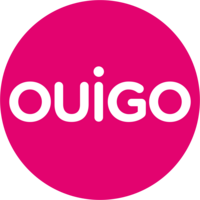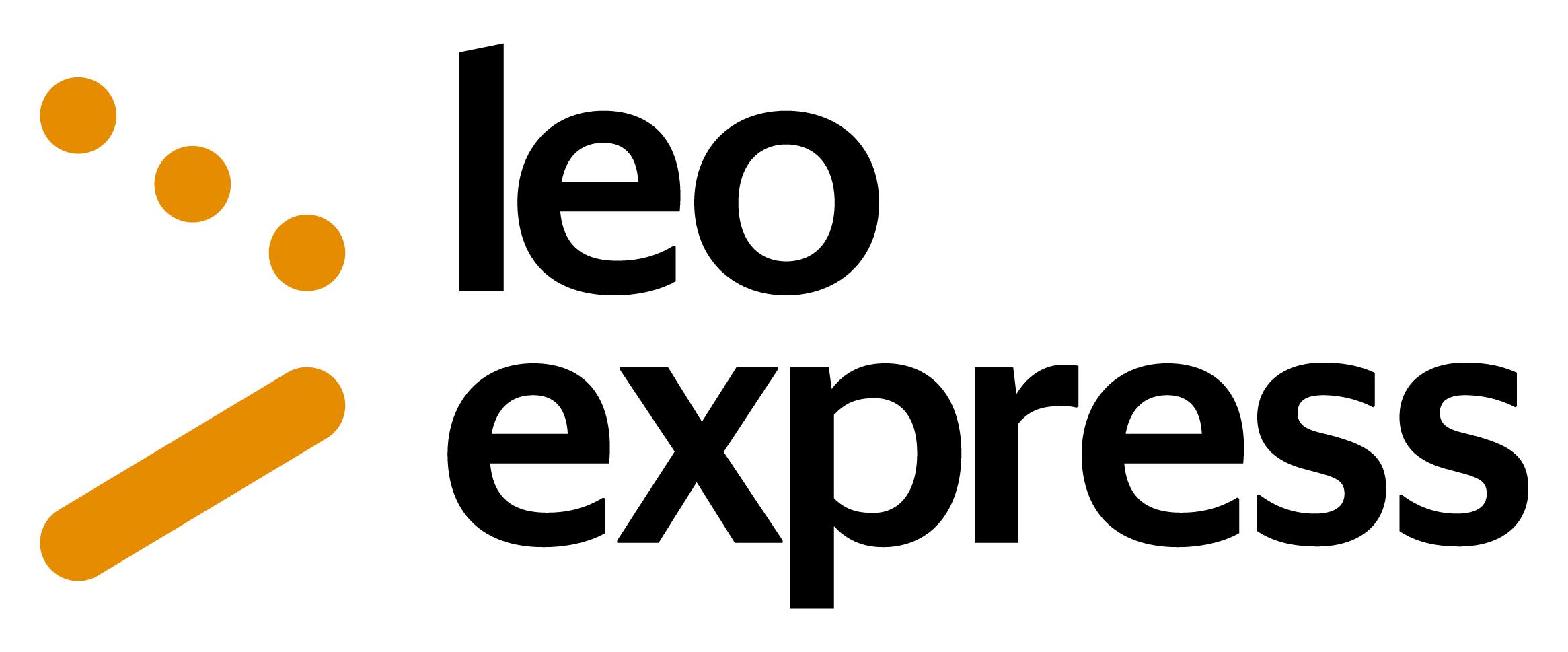
You can buy train tickets directly from the operator or through a reseller. The reseller is typically slightly more expensive (3-5%) but can provide an easier booking experience, especially if you travel with more than one operator.


These operators provide a complete journey either as a direct connection or through their partners. Even if a change of trains is involved, it’s all part of a single itinerary managed by the same train company or its partners, offering a smoother and more coordinated travel experience.

Some operators don’t run direct trains the whole way, but they serve either the departure or arrival station. In many cases, you can combine two of these operators to complete your journey by changing trains along the way. This is often a flexible and budget-friendly way to travel — especially if you’re comfortable piecing together your own itinerary.
Just keep in mind that these are separate journeys, which means a delay on the first leg could cause you to miss the second without automatic compensation or rebooking. It’s a great option for confident travelers who don’t mind a bit of extra planning.




FlixBus is primarily a long-distance bus service provider known for offering budget-friendly travel options across Europe. However, they have expanded their services to include FlixTrain, which operates in a similar affordable model as their bus services, although FlixTrain itself may not directly serve the route from Barcelona to Salzburg. FlixBus and FlixTrain are known for offering a cost-effective travel alternative, though not as amenity-rich as traditional high-speed or long-distance trains like those operated by national carriers in Europe.
FlixBus services, for instance, offer basic amenities that include reclining seats, Wi-Fi access where available, power outlets at each seat to keep devices charged, and restrooms on board. FlixTrain, similar to the buses, emphasizes affordability but aims to provide a comfortable and straightforward rail journey, equipped with Wi-Fi, power sockets, and snacks or drinks purchasable onboard. They aim to maintain cleanliness and often have newer, environmentally efficient coaches and train cars.
In terms of customer support, FlixBus provides a user-friendly booking platform through their website and mobile app, offering customer service via these platforms for reservations, changes, or cancellations. They often have an online help center addressing frequently asked questions, as well as email support for more specific queries. On their trains and buses, the staff is trained to assist with basic customer needs.
First-time travelers should be aware that FlixBus and FlixTrain cater to those looking for economical travel, which might not come with as many amenities or the luxury of high-speed rail services, but the core focus is on providing value and accessibility for budget-conscious passengers. It’s also important to check their specific route availability and any bus connections necessary to complete a journey between destinations they may serve indirectly, like from Barcelona to Salzburg.
The Interrail Global Pass is valid for travel from Barcelona to Salzburg for EU residents who are not residents of Spain or Austria. The Interrail One Country Pass is not valid for this route as it only covers travel within one country, and travelling from Barcelona to Salzburg involves multiple countries. The Eurail Pass is valid for non-EU residents traveling from Barcelona to Salzburg, covering multiple countries along the route.
Upon arriving in Salzburg by train, you will find yourself at Salzburg Hauptbahnhof, the main train station. The city does not have a metro or tram system, but it is well-serviced by an efficient public bus network operated by Salzburg AG and Albus. The Obus, a network of trolleybuses, covers key routes across the city. These trolleybuses are environmentally friendly and provide a frequent and reliable service, especially to popular areas like the city center, Mirabell Palace, and Hellbrunn. You can purchase tickets at machines at major stops or on board the buses. For taxi services, you can find ranks outside the train station and in central locations like Residenzplatz. Taxis can be hailed on the street or ordered via phone or app. Ridesharing services such as Uber are not available in Salzburg; however, some local companies may offer similar app-based services. To explore the city center, which is relatively compact, walking is a convenient option to enjoy the sights up close.
Salzburg boasts excellent rail connections, linking it seamlessly to both domestic destinations within Austria and international cities. Domestically, the ÖBB (Austrian Federal Railways) provides frequent services to Vienna, which typically take around 2.5 to 3 hours on high-speed Railjet trains. Another common domestic route is to Innsbruck, usually taking about 1.5 to 2 hours, with scenic views of the Austrian Alps along the way.
Internationally, Salzburg is well-connected by train to several major cities. Frequent trains, including Railjet and EuroCity services, connect Salzburg to Munich, Germany, with a travel time of about 1.5 to 2 hours. This journey is quite popular due to the proximity and ease of travel between the two cities. Zurich in Switzerland is another accessible international destination, with train services often taking around 5 hours, offering passengers a comfortable and picturesque ride through the Austrian and Swiss landscapes.
Those traveling to Italy can take advantage of train connections to cities such as Venice, with the journey typically taking about 6 to 7 hours via EuroCity trains. Further afield, other international routes include services to Prague in the Czech Republic and Budapest in Hungary, both of which are serviced by direct trains and can take approximately 7 and 5.5 hours respectively.
These rail connections highlight Salzburg’s strategic position as a hub in Central Europe, offering efficient and comfortable travel by train to various key domestic and international destinations.
The best time to visit Salzburg generally depends on what you’re seeking from your trip. For pleasant weather, late spring (May and June) and early fall (September) are ideal, offering mild temperatures and fewer tourists compared to summer. These months also present beautiful scenery with blossoms in spring and colorful foliage in fall, enhancing the natural beauty of the region. If you’re looking for discounts on travel and accommodation, visiting in the shoulder months of April or October can also provide cost savings while still enjoying decent weather.
Summer (July and August) is popular due to warm weather, but it’s also the peak tourist season, which can lead to higher prices and crowded attractions. This period features the renowned Salzburg Festival, an established celebration of music and drama, which can be a significant draw for culture enthusiasts, though it brings in crowds and can make finding accommodation more challenging.
For those who enjoy winter activities and festive experiences, December is an enchanting time to visit. The city is adorned with Christmas markets, and the festive atmosphere is truly magical. However, it’s wise to book accommodations early due to increased demand during the holiday season.
Arriving by train can be quite convenient throughout the year, and it’s often advisable to book tickets in advance to secure the best rates. Summer and winter holidays generally see heightened travel activity, so planning and bookings are particularly crucial during these periods.
When traveling by train from Barcelona to Salzburg, consider packing items such as a valid passport or national ID as travel documents are required for crossing borders. If applicable, include your train tickets or an e-ticket on your phone. A universal power adapter will be necessary, as Spain uses Type C/F plugs and Austria uses Type F plugs. Pack comfortable clothing for the journey, along with layered clothing for different weather conditions in Salzburg. Bring a refillable water bottle and snacks for the train ride. Noise-canceling headphones, entertainment such as a book or downloaded movies, and a travel pillow could enhance your comfort during the trip. A small backpack or day bag will be useful for carrying essentials while exploring Salzburg. Don’t forget personal hygiene items, medications, and any electronic devices you may need, ensuring you have chargers for them. A phrasebook or translation app might be handy if you’re not fluent in German. Consider a small travel guide or map of Salzburg to help you navigate the city once you arrive. Finally, carry credit/debit cards and some Euros in cash for miscellaneous expenses.